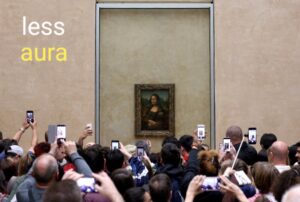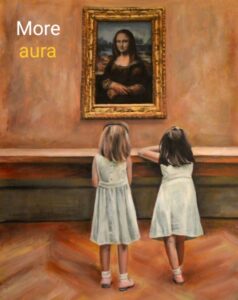Benjamin, in his essay, discussed how works of art changed throughout history and how they used to have cult value when they belonged to private spaces, rituals, and traditions such as caves, temples, and churches. When the work of art moved from sacred places to museums, it started to be shared only to have a public present ability. For example, it is now a question of bringing the attention of the audience. He also talked about an important thing, which is the difference between authenticity and copies, and how the authenticity of an original work of art is related to the experience of time and space, which he called an aura.
The aura For Benjamin, a supernatural power comes from the uniqueness of that piece of art, which is lost because of the loss of the “sensory experience” through reproduction; moreover, we can see this in the example of videos and photography. For instance, now everyone can use their phones to click on a video of the waves of the sea to relax still when sitting and listening to the waves in reality in that specific place, which is the sea. “The feeling is so much different” because that video isn’t “fully present.” Furthermore, the accessibility to everything and the ability to find and consume images faster with less effort have somehow made the unique existence of that art somehow vanish because you can find whatever you want and whenever you want it.





